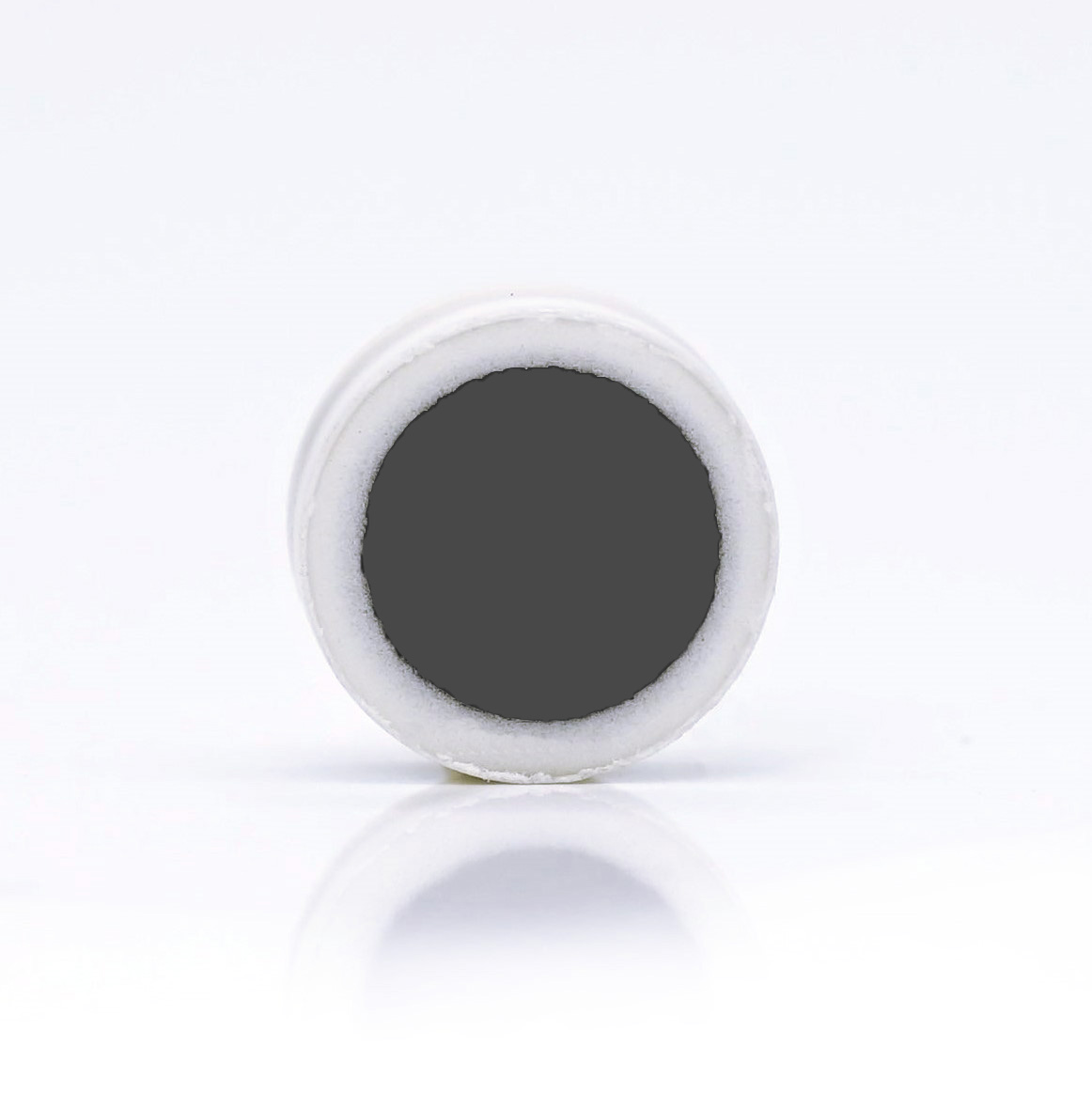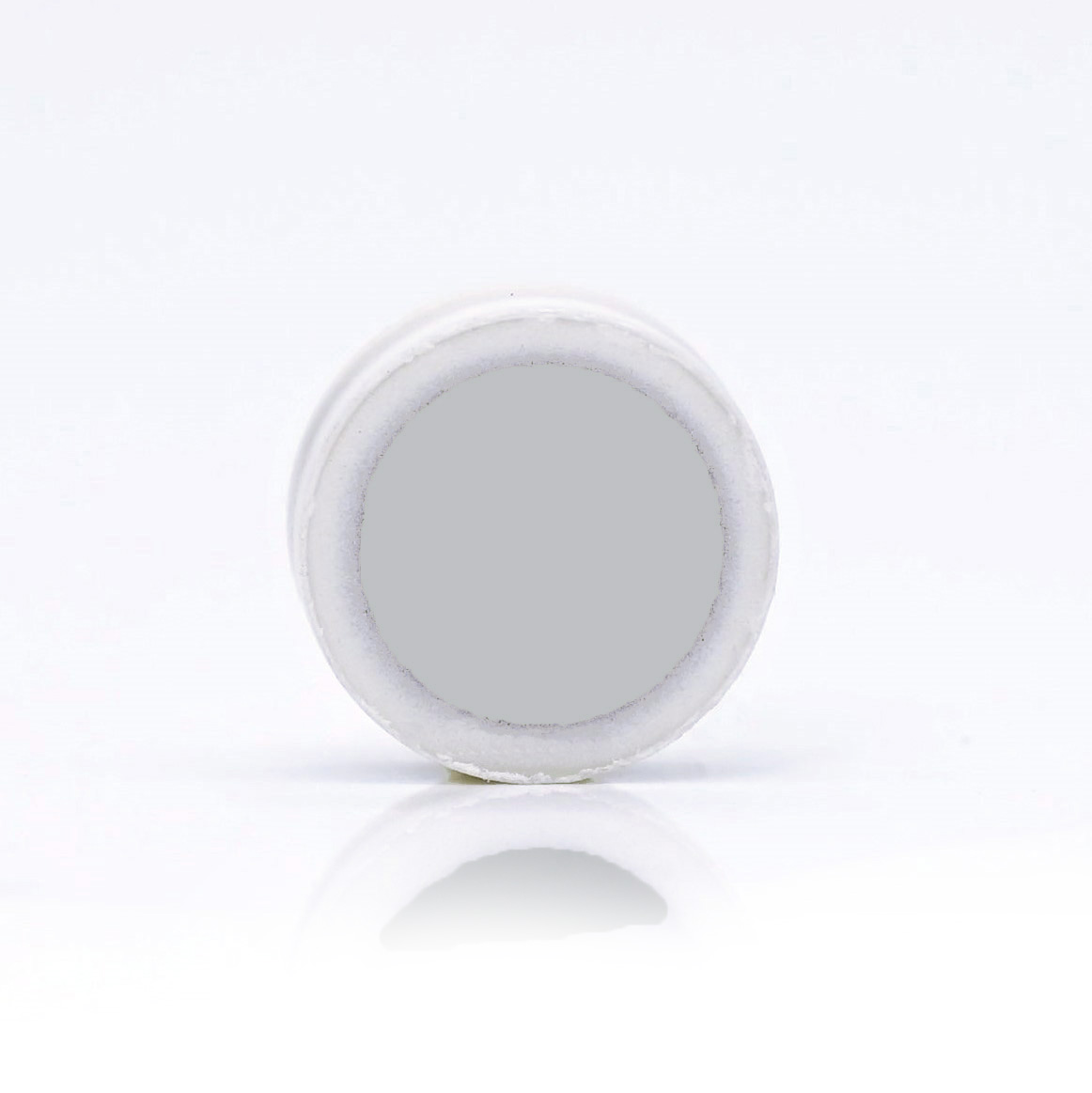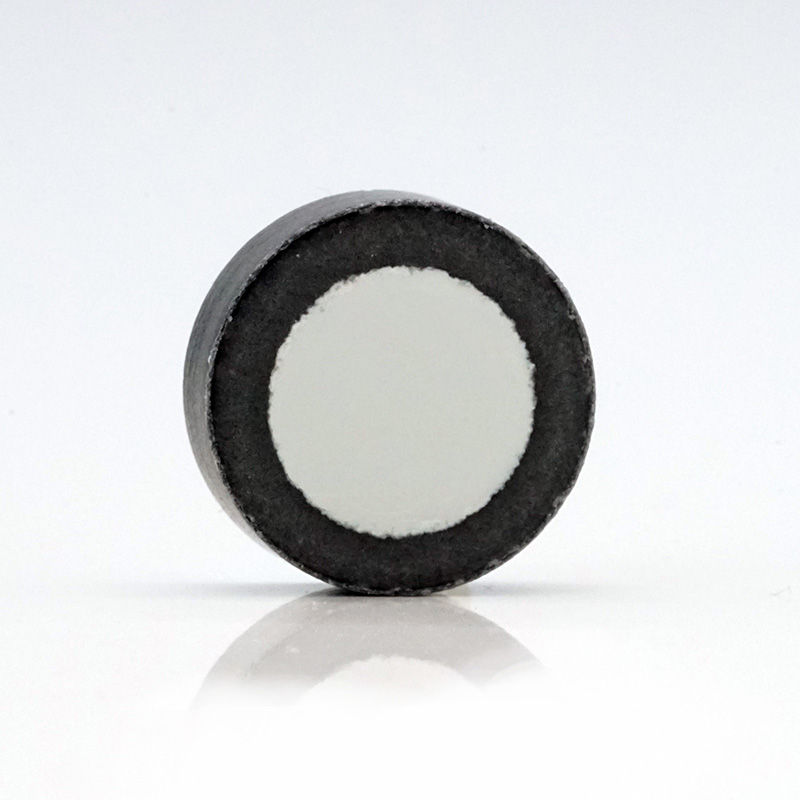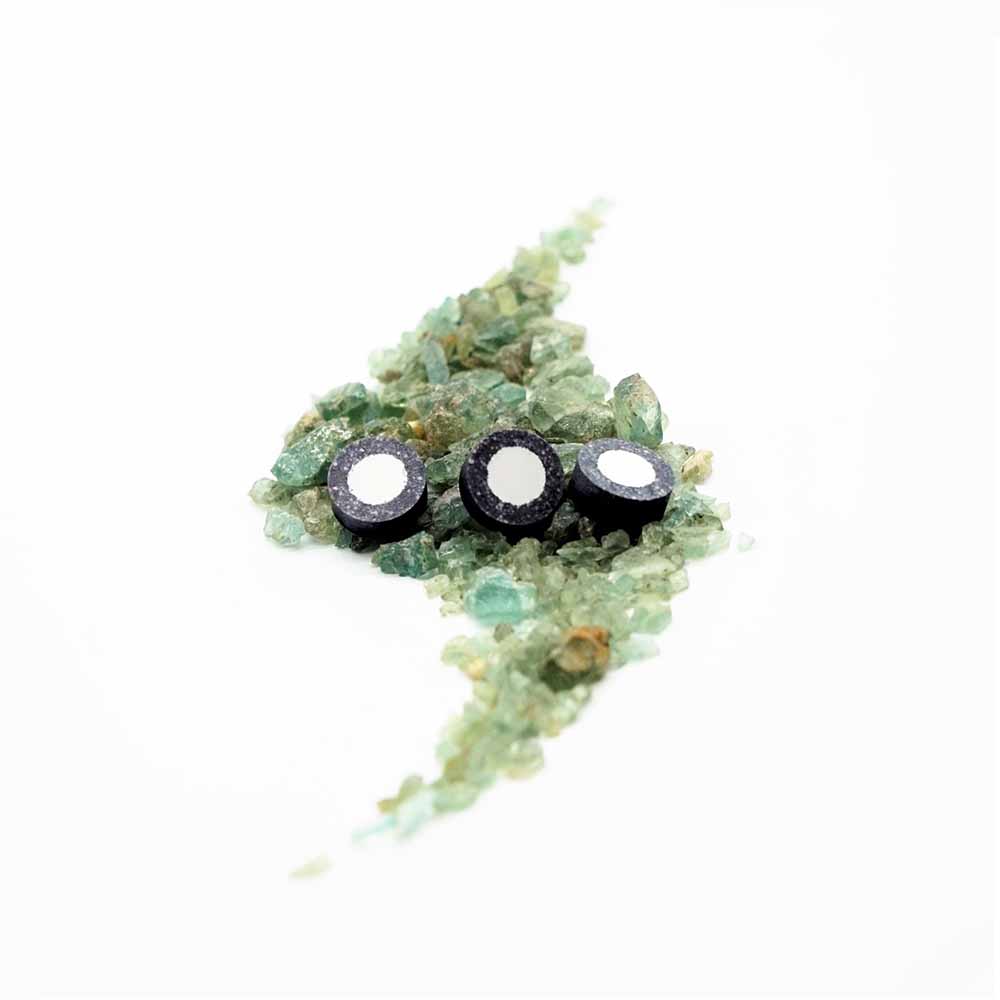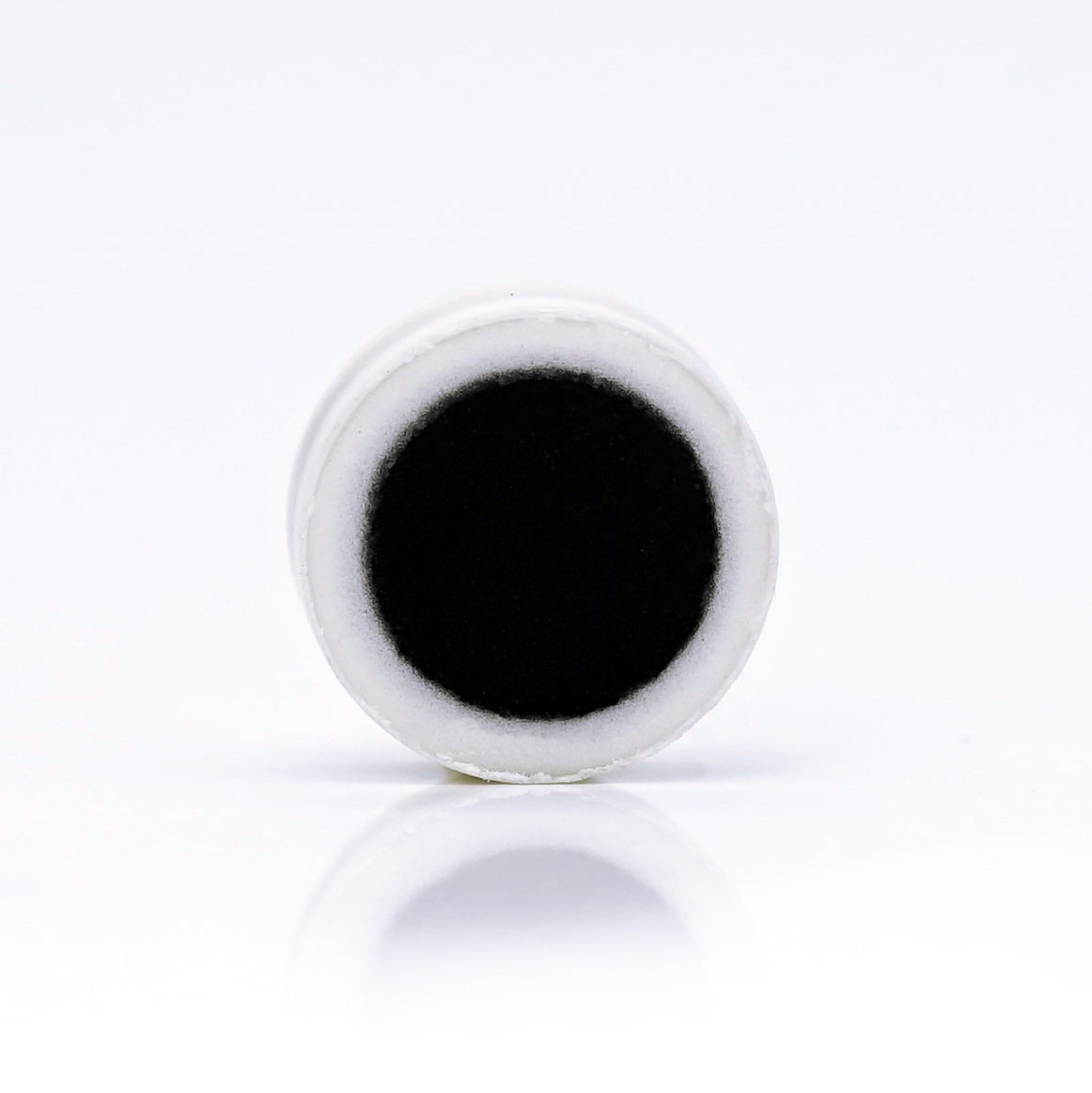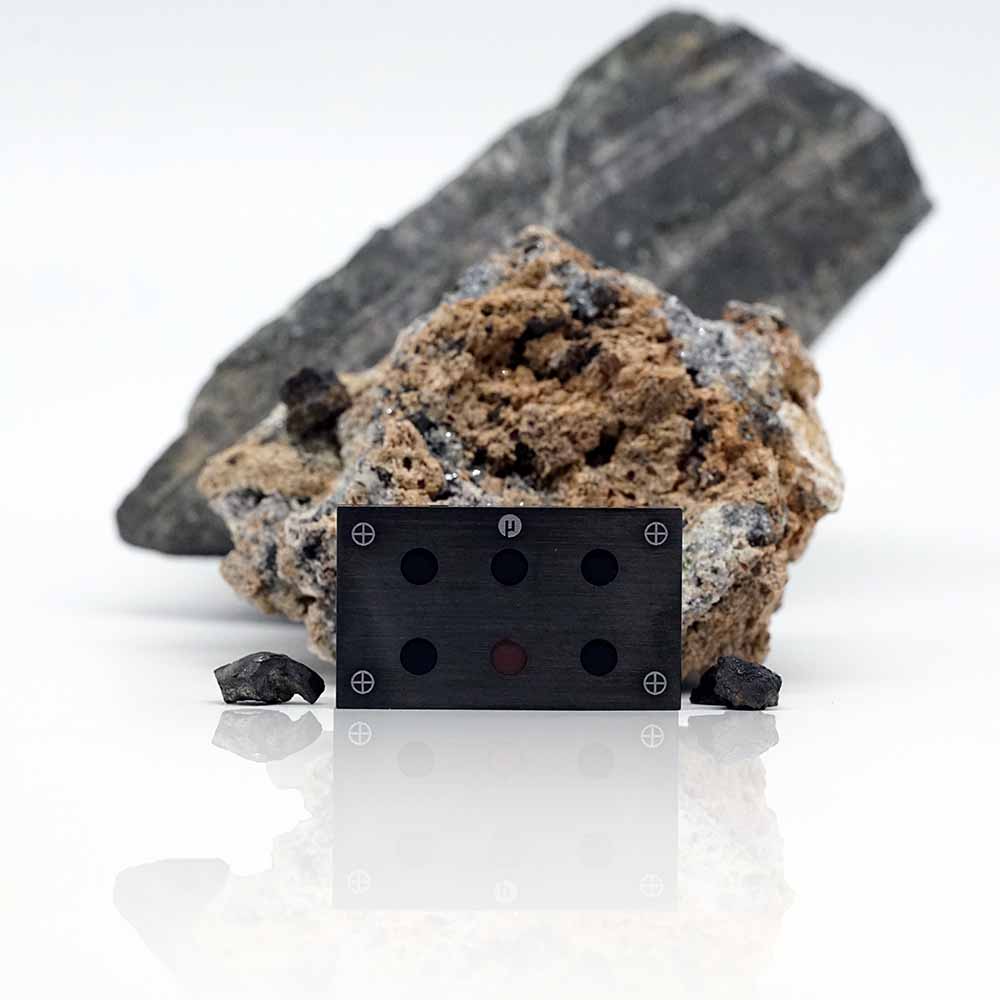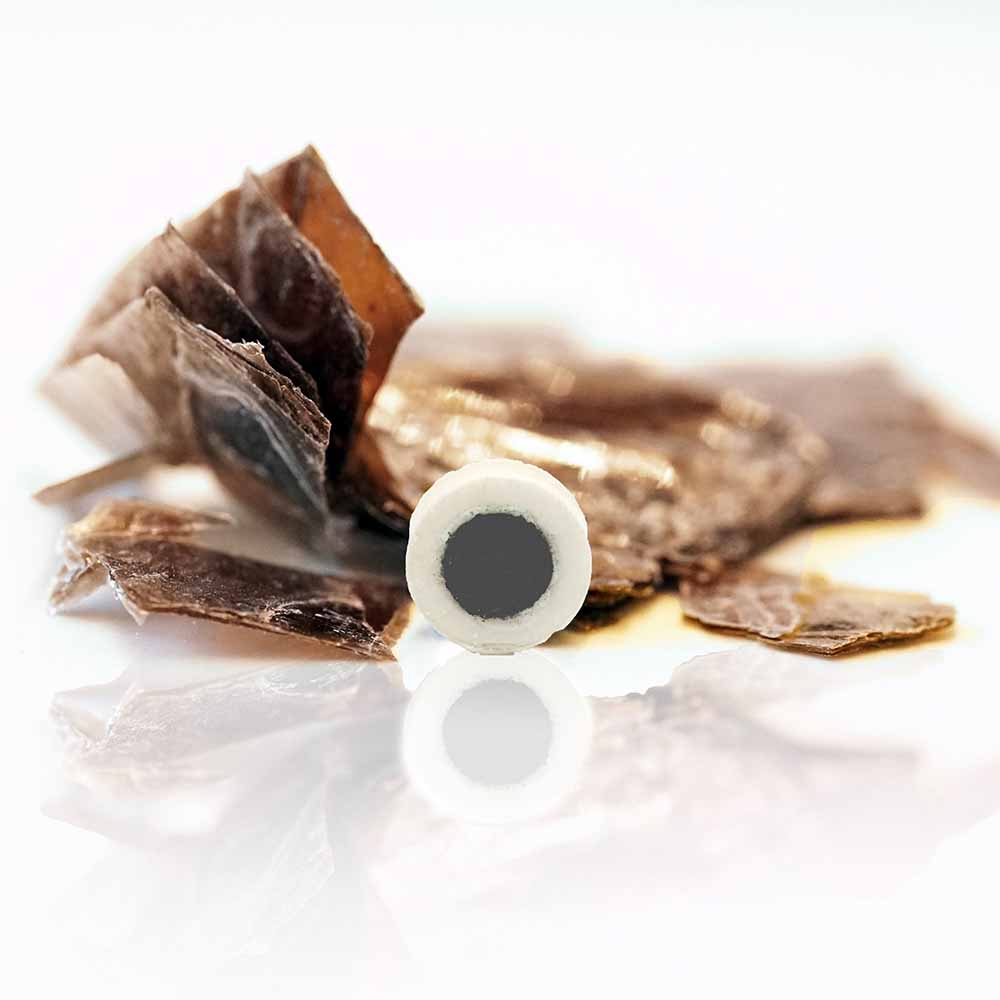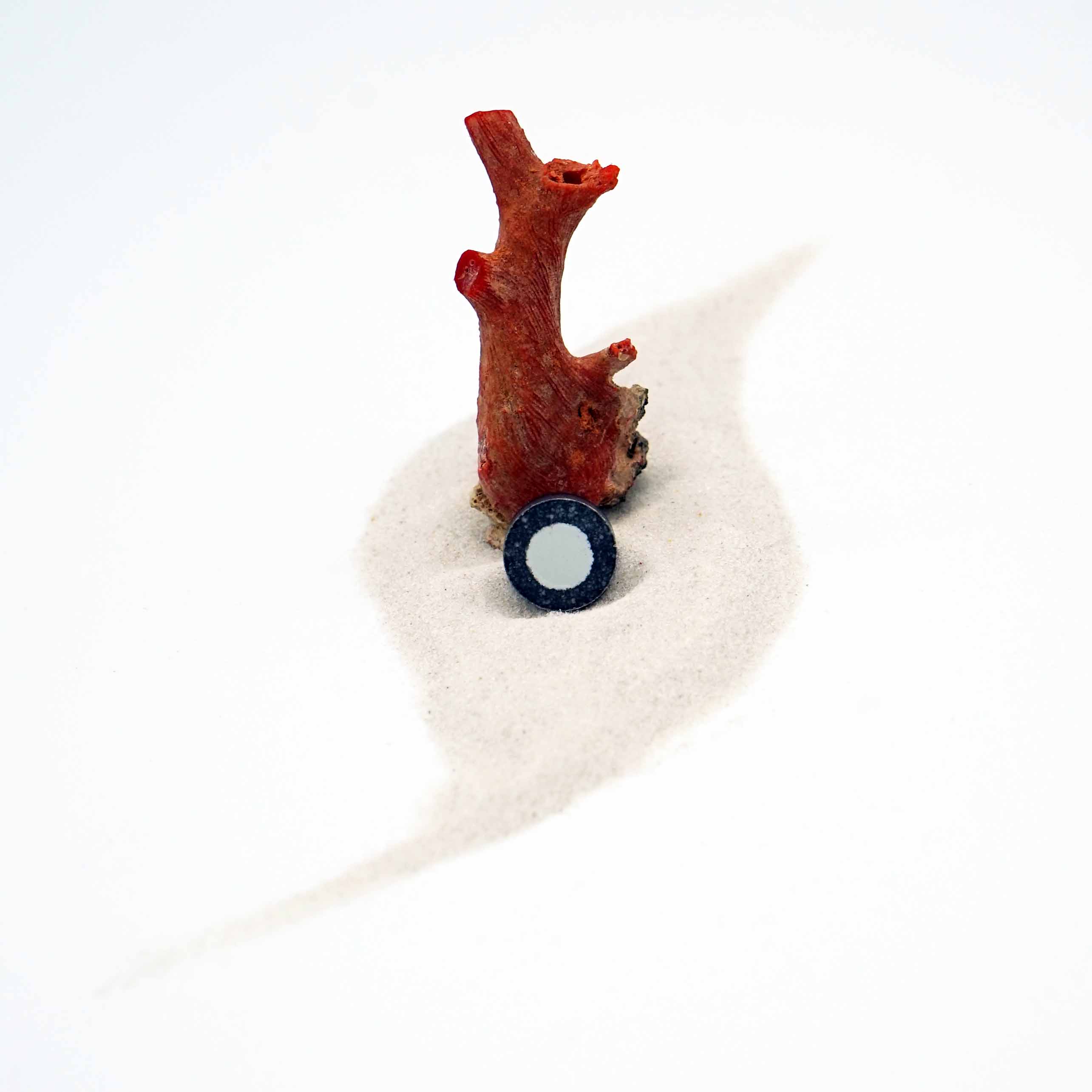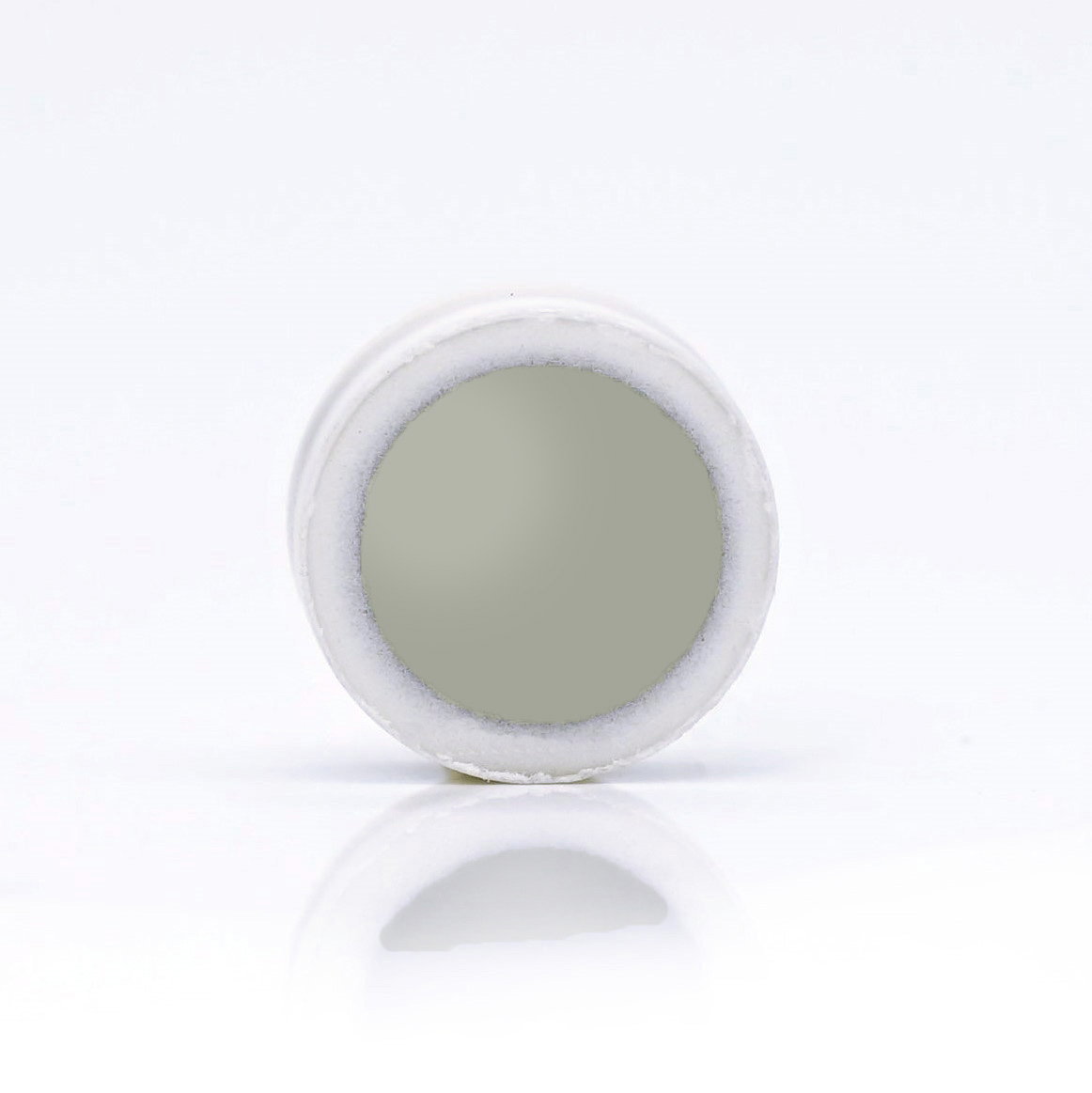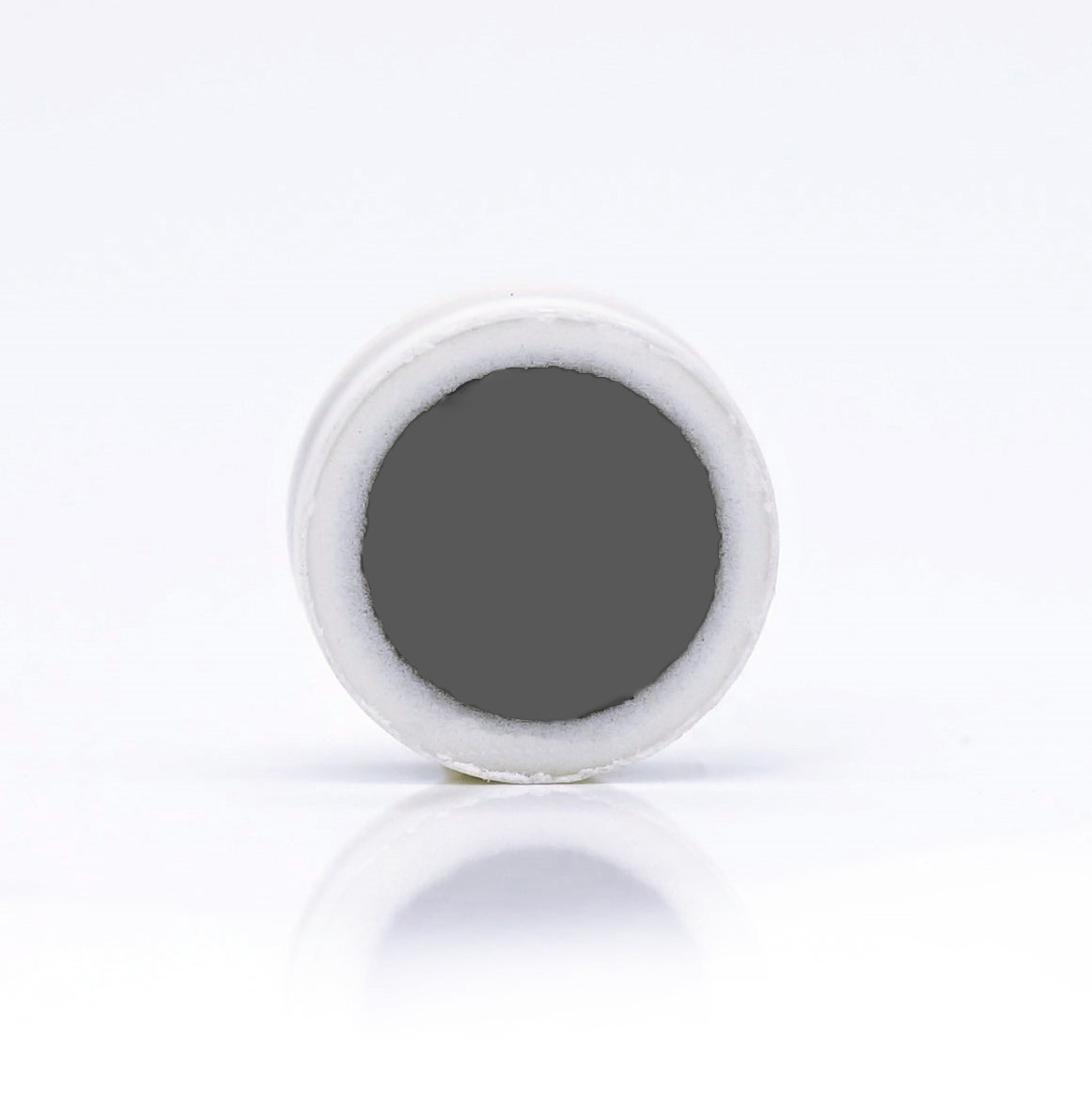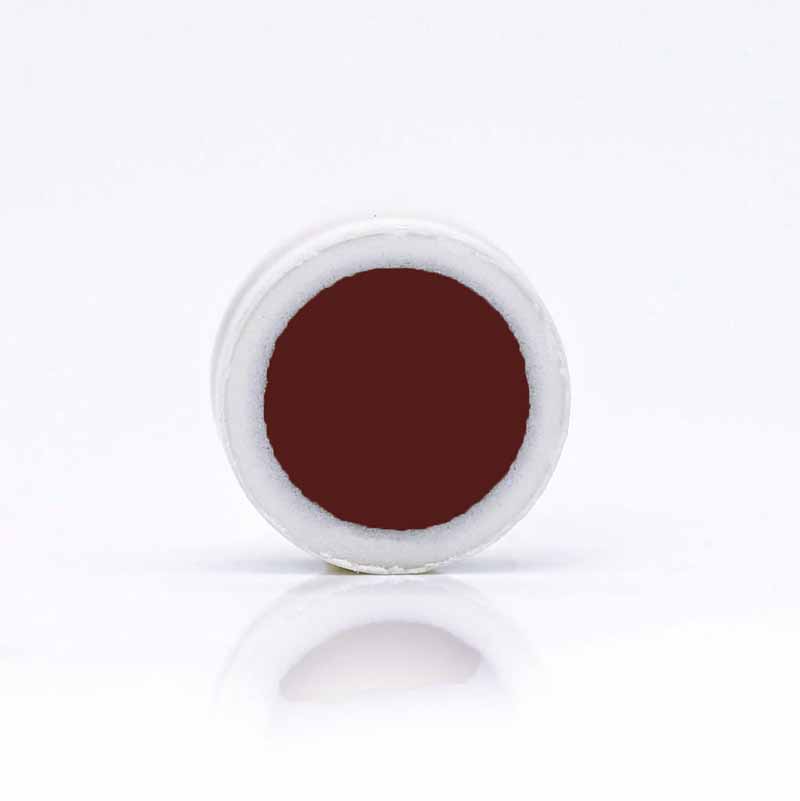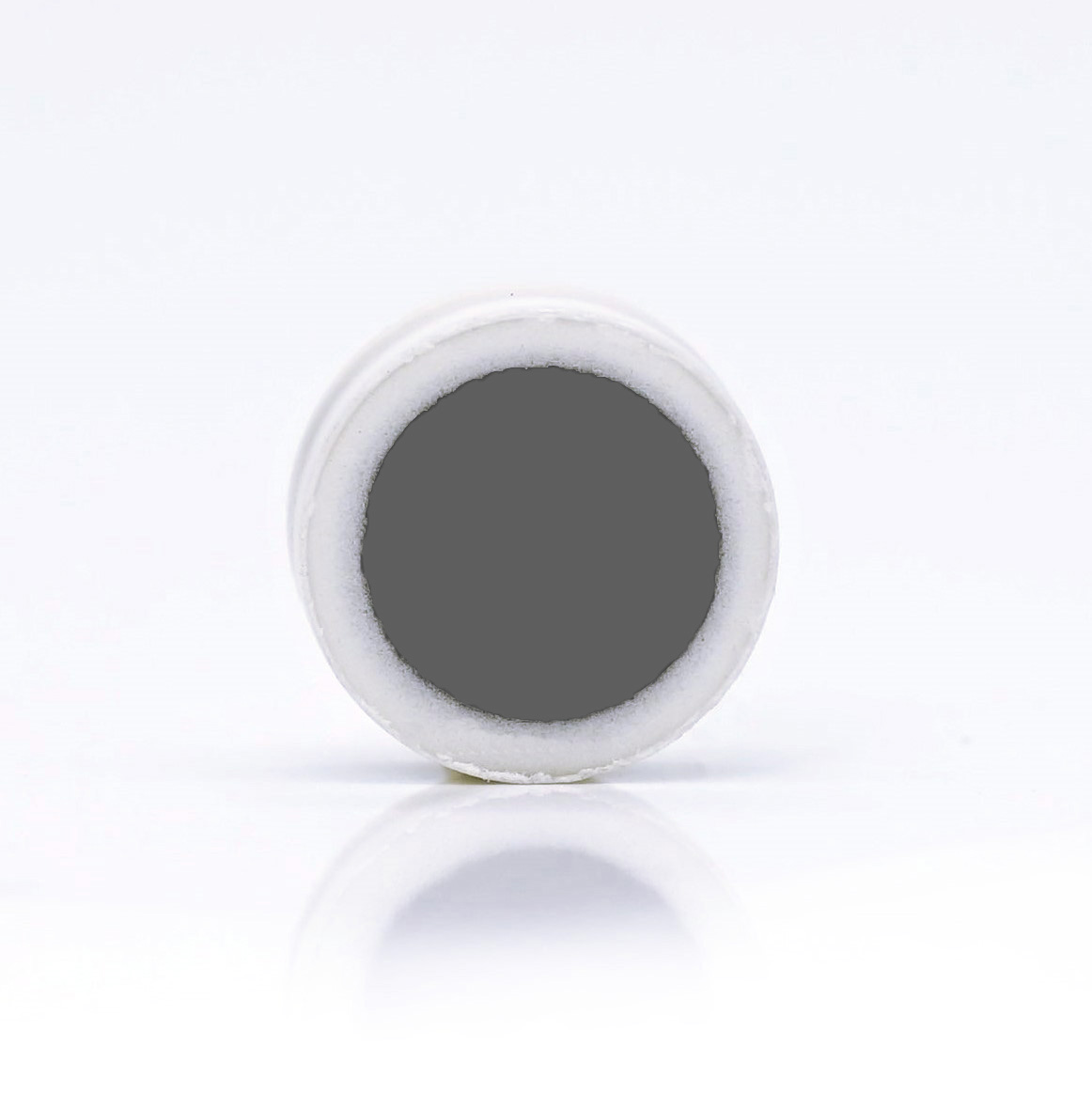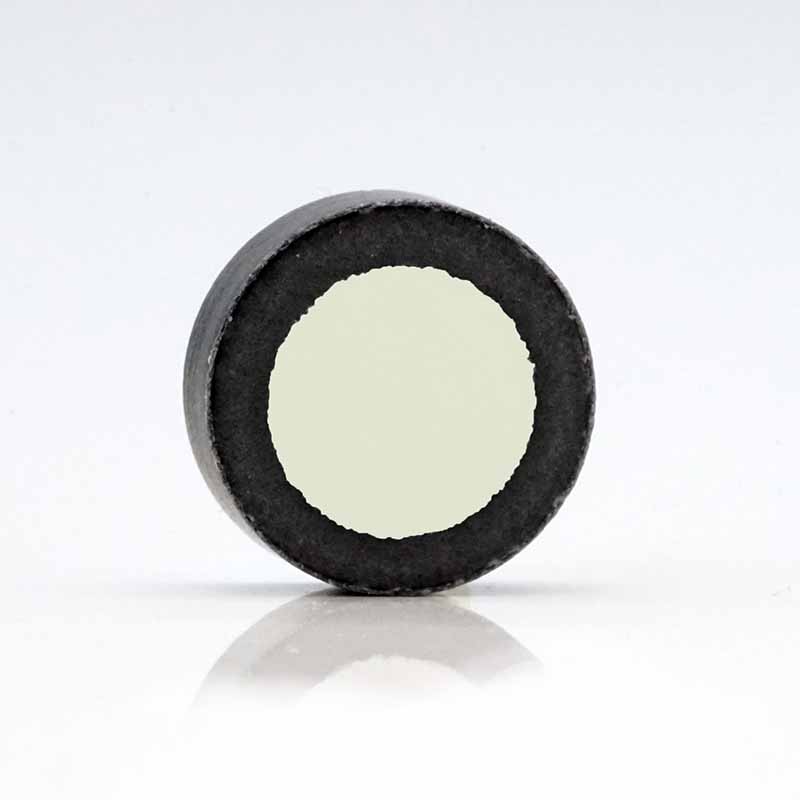Where we show up
Now that we have been around a bit longer, there are some publications that have used our pellets. We have now started to collect them and link them here.
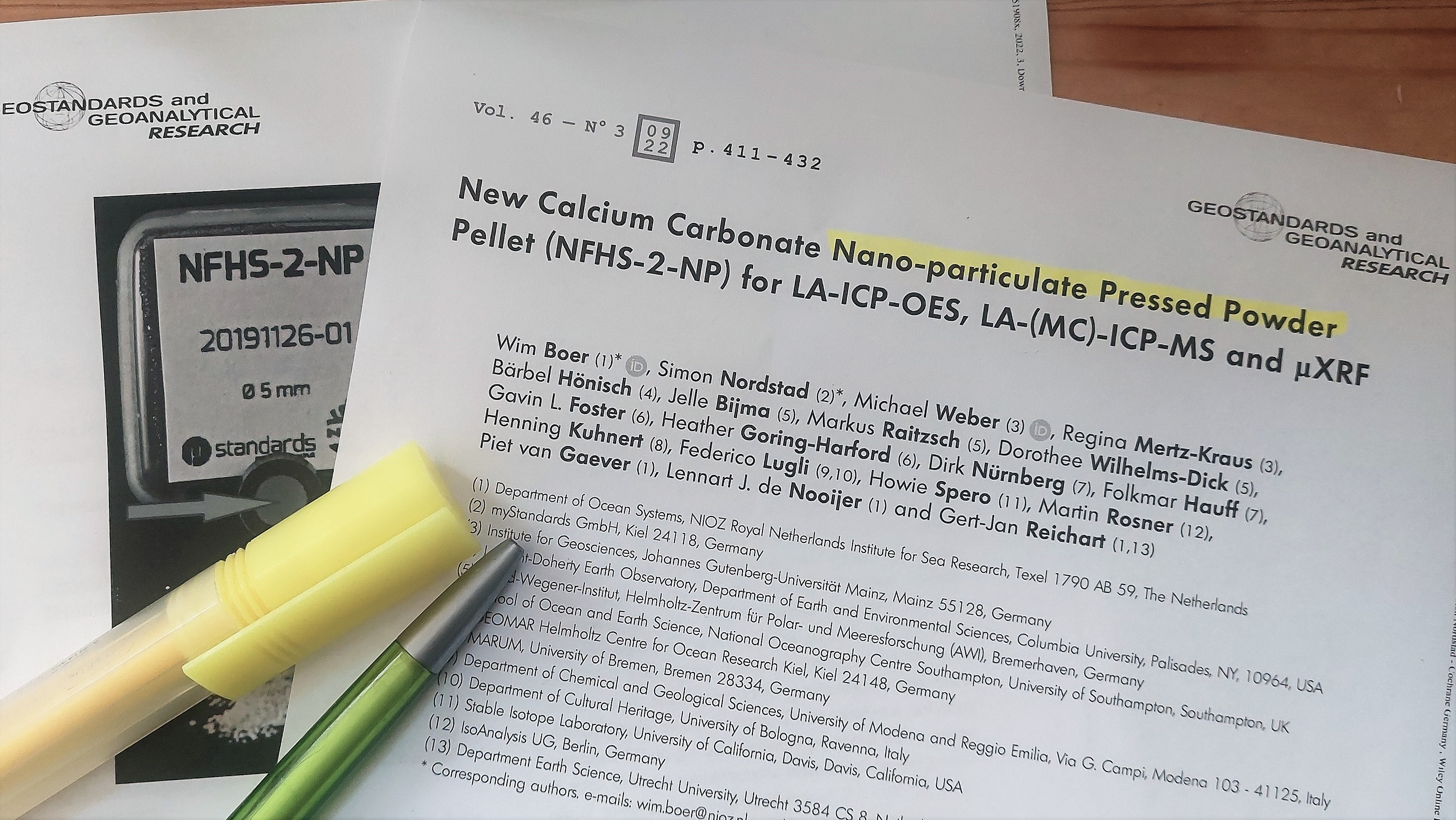

Thank you for your interest in our recent webinar in collaboration with Evident.
Our CEO and founder, Simon Nordstad, presented an overview of different analysis techniques, provided insights into sample preparation methods, discussed the importance of reference materials, and reviewed QA/QC protocols.
To receive the slides, please complete the following form:
Compositional and traceability analysis of lithium ores and concentrates by LA-ICP-MS and GDMS
Andrew M. Zipkin, Gideon Bartov
Keywords: LA-ICP-MS; GDMS; Pegmatite Lithium Ore; Nano-Pellets
2025 https://www.eag.com/app-note/compositional-and-traceability-analysis-of-lithium-ores-and-concentrates-by-la-icp-ms-and-gdms/
Introduction: Lithium-ion batteries (LIBs) are an essential technology for the clean energy transition currently in progress across the globe. LIBs power everything from smart phones and implantable medical devices to electric vehicles (EVs) and whole home backup power systems. The market for LIBs will only increase as the need for advanced energy storage grows hand-in-hand with the broad adoption of renewable energy sources like wind turbines and solar panels.
A recent study by McKinsey Battery Insights1 found that the LIB supply chain is expected to grow by ~30% annually through 2030, by which time the global demand for LIB capacity is estimated to reach ~4700 Gigawatt hours (GWh) from ~700 GWh in 2022. Demand will overwhelmingly be driven by mobility applications like EVs, with stationary storage and consumer electronics demand also anticipated to grow simultaneously. The tremendous economic opportunity represented by LIBs as part of the clean energy transition is accompanied by the responsibility to overcome the environmental, social, and governance challenges that the battery value chain will face from mining through recycling.
As a leading global scientific services provider with deep experience in materials science and engineering disciplines, Eurofins EAG Laboratories stands ready to help clients working in all stages of the battery value chain achieve their business goals and contribute to the decarbonization of the global economy.
Lithium ore, also known as hard-rock lithium, is derived from mining and is one of the two major raw material sources for lithium production for industrial applications. The other source is continental lithium brines in which lithium weathers out of rock, is transported in solution by water, and then is trapped in inland basins and naturally concentrated by evaporation. This application note will focus on hard rock lithium. The most important minerals for lithium mining are spodumene (Li2O, Al₂O₃·4SiO₂) and petalite (Li2O, Al₂O₃·8SiO₂). Both minerals occur in granitic pegmatites, a type of igneous rock characterized by its coarse texture and mineralogical composition dominated by quartz, feldspar, and mica.
New Research on Hard Rock Lithium Ore - Presented by two EAG Scientists at Nordic Conference 2024
Abstract: Two Senior Scientists from the Syracuse, New York facility of Eurofins EAG Laboratories recently presented new research about the analysis of hard rock lithium ore at the 11th Nordic Conference on Plasma Spectrochemistry, held in Loen, Norway between June 9th and 13th.
Drs. Andrew Zipkin and Gideon Bartov collaborated on a study seeking to improve upon existing methods of analyzing the elemental composition of hard rock lithium ore. Completely digesting such ores for analysis by Inductively Coupled Plasma-Mass Spectrometry (ICP-MS) or ICP-Optical Emission Spectroscopy (ICP-OES) is time consuming, uses hazardous chemical reagents, and has the potential both introduce contamination and induce the loss of volatile elements in the ore. In contrast to a typical digestion-solution approach, the two scientists explored using a combination of solid-sampling techniques: Laser Ablation-Inductively Coupled Plasma-Mass Spectrometry (LA-ICP-MS) and Glow Discharge Mass Spectrometry (GDMS). EAG Laboratories partnered with us, myStandards GmbH of Kiel, Germany to use our nanopowder lithium ore reference materials in this work. Methods for applying LA-ICP-MS and GDMS were developed and evaluated using certified reference materials made of lithium pegmatite ore with varying concentrations of lithium and other elements.
Visit eag.com and read the full presentation
Impact of Seawater Inorganic Carbon Chemistry on Element Incorporation in Foraminiferal Shell Carbonate
S. Karancz, L. J. de Nooijer, G. J. A. Brummer, J. Lattaud, N. Haghipour, Y. Rosenthal, G. J. Reichart
Geochemistry, Geophysics, Geosystems, 25, e2023GC011302, 2024, https://doi.org/10.1029/2023GC011302
Abstract: Reconstruction of the marine inorganic carbon system relies on proxy signal carriers, such as element/calcium (El/Ca) ratios in foraminiferal shells. Concentrations of boron, lithium, strontium, and sulfur have been shown to vary with carbonate system parameters, but when comparing individual proxy reconstructions based on these elements, they are rarely in complete agreement. This is likely caused by the simultaneous effects of multiple environmental factors on element incorporation. Culture experiments with benthic foraminifera have revealed that the shell's S/Ca reflects the carbon chemistry and can potentially be used as a proxy for seawater [CO32-]. Aiming to investigate the application potential of sulfur incorporation for carbonate speciation reconstruction, we present S/Ca ratios in five planktonic foraminiferal species, namely Globigerina bulloides, Globigerinoides ruber albus, Globigerinoides ruber ruber, Trilobatus sacculifer, and Neogloboquadrina incompta from core-top sediments in regions with contrasting [CO32-] , [HCO3-], temperature, and salinity. Analyses of B/Ca and Mg/Ca ratios are included here since these elements have been shown to depend to a certain degree on carbon system parameters (e.g., calcite saturation state and pH, respectively) as well. Moreover, foraminiferal Mg/Ca values covary with S/Ca values and thereby might compromise its proxy application. In contrast to previously published results, this new data set shows a positive correlation between the incorporation of sulfur in the foraminifer's shell and seawater [CO32-]. As the incorporation of sulfur and magnesium are positively correlated, S/Mg values of the same foraminifera may be used to improve inorganic carbon system reconstructions.
Speleothems uncover Late Holocene environmental changes across the Nuragic period in Sardinia (Italy): A possible human influence on land use during bronze to post-Iron Age cultural shifts
Andrea Columbu, Carlos Pérez-Mejías, Eleonora Regattieri, Federico Lugli, Xiyu Dong, Anna Depalmas, Rita Melis, Anna Cipriani, Hai Cheng, Giovanni Zanchetta, Jo De Waele
Keywords: Holocene, Nuraghe, Nuragic culture, Bronze age, Iron age, Sardinia, Palaeoclimate, Romans, Cultural shifts, Punics
Quaternary Science Reviews, Volume 328, 2024, 108534, ISSN 0277-3791, https://doi.org/10.1016/j.quascirev.2024.108534
Abstract: During the Bronze and Iron Age, Sardinia was home of one of the most technologically advanced Mediterranean societies (the Nuragic culture). Given its key geographical location, the island was also the fulcrum of deep cultural exchanges. Toward the end of the Iron Age, Phoenicians, and especially Carthaginians and Romans, massively frequented Sardinia for different purposes. This marks an important cultural transition for the region, as the ancient Nuragic-related society terminated. At the same time, this impacted the subsistence and land use practices. Together with middle to late Holocene climate changes, the novel anthropic activities had a pivotal role in shaping the landscape around the island. However, high resolution climate and environmental records for these culturally important phases are still lacking in Sardinia. Thus, this paper explores palaeoenvironmental changes from the Bronze Age to post Iron Ages times by using carbonate speleothems from Suttaterra de Sarpis Cave (Urzulei, central east Sardinia), strategically located nearby the Or Murales Nuragic Village. U–Th ages (n = 20) indicate that five stalagmites comprehensively span the last ∼7000 years. Peculiarly, they all show an evident stratigraphic discontinuity. Age models attest that hiatuses can be at times associated with the discontinuities, spanning periods of ∼1200 to ∼200 years. Importantly, the discontinuities occurred from the Late Iron Age to the Roman period. Based on fabric observations, trace elements and δ13C- δ18O analyses, the discontinuities are primarily attributed to a progressive change of land use above the cave. We suppose that deforestation aimed to clearance for agriculture and livestock practices probably was the most impacting factor for infiltration dynamics and soil state, thus affecting the studied speleothems, although archaeological and historical data are absent for the specific study area. Instead, this is in line with the cultural transition occurring in Sardinia toward the end of the Iron Age, with novel agricultural practices imported by the overseas populations. The anthropic disturbance to the millennial-long karst equilibrium possibly overprinted the response of speleothem proxies to climate oscillations, although future higher resolution analyses are necessary to better investigate the evolution of climate during the Holocene as well as its role in the development of ancient civilizations. Indeed, this is the first speleothem-based Holocene palaeoenvironmental reconstruction accomplished in Sardinia. Considering the paucity of natural lakes in this key location, speleothems here demonstrate their potential in exploring human-driven palaeoenvironmental changes during times of cultural transitions within the Mediterranean context.
Anthropogenic Impacts on Urban Watersheds: Insights from LA-ICP-MS Analyses of Bald Cypress Tree Cores
Aristos Papagiannakis Brandt
Thesis: Presented to the Graduate School of the University of Texas at Austin in Partial Fulfillment of the Requirements for the Degree of Master of Science in Energy and Earth Resources https://repositories.lib.utexas.edu/bitstreams/c14cf6cd-ca4e-4949-94bc-bcfecf400525/download

Extraordinary materials
Do you want your own material as standard or do you want pellets from non-geological materials?
Contact us and we will try to find a solution.
Abstract: This study provides insights into the impact of anthropogenic factors on urban watersheds using elemental analysis of bald cypress (Taxodium distichum) tree cores as a proxy for watershed water chemistry. It compares five trees from two watersheds in Austin, Texas, three from the highly urbanized Waller Creek watershed (Waller Ck.) and two from the less urbanized Onion Creek watershed (Onion Ck.). Measurements are carried out by laser ablation inductively coupled plasma mass spectrometry (LA-ICP-MS). LA-ICP-MS was calibrated/verified by solution ICP-MS measurements of two certified reference materials. The time series of elemental concentrations revealed (1) distinctly different patterns between sapwood and heartwood, (2) distinct increases in concentrations coinciding with severe drought, (3) similarities between some elemental concentrations in tree rings and streamwater, and (4) similar patterns in concentration biplots between elements in the tree rings and the streamwater for both watersheds. The latter supports the hypothesis that dendrochemistry can serve as a proxy for streamwater chemistry. The elements associated with traffic and municipal water leakage were established from the literature and their historic trends analyzed in conjunction with changes in traffic volumes and NRW losses. In analyzing these trends, the uncertainty in measuring the concentration of each element was considered. Over the 2001-2021 period, several traffic-associated elements (K and Cr) were found to increase with increasing Onion Ck. traffic, while only Zn was found to decrease with decreasing Waller Ck. traffic. Given the uncertainties on measuring Al and Cu, no clear correlation was established between changes of these elements and traffic. The concentrations of municipal water leakage-associated elements Mg and Cu were found to increase in Waller Ck. only suggesting that that this is a problem in the heavily urbanized watershed. Although this analysis was not able to separate the sources contributing to these elemental concentration changes, it provided insights into the effect of urbanization on urban watersheds. Positive matrix factorization (PMF) analysis is used to compare the two watersheds in terms of the relative proportion of elements over time (period 1983-2019). Six factors are fitted and their relationship to elemental concentrations is defined. The results, although dominated by Mg, K and Fe, which are common in topsoil, show that Cu and Fe, which are associated with traffic and municipal water, are higher in Waller Ck. than Onion Ck.
New quantification approaches for total-reflection X-ray fluorescence analysis of micro-sized samples: Apatite case study
Artem S. Maltsev, Alena N. Zhilicheva, Galina V. Pashkova, Anas A. Karimov
Keywords: TXRF; LA-ICP-MS; Apatite; Micro-size; External calibration; Dead time; Normalization
Microchemical Journal, Volume 193, 2023, 109139,
ISSN 0026-265X, https://doi.org/10.1016/j.microc.2023.109139
Abstract: Sensitive methods for quantitative elemental analysis of micro-sized samples are limited. In this study, total-reflection X-ray fluorescence (TXRF) method was applied as fast and cost-efficient method to apatite microcrystals. In situ acid digestion based on direct treatment of single crystal onto the carrier was used as sample preparation strategy. Since the internal standard addition is complicated in the case of micro-sized samples, new quantification approaches based on external calibration for TXRF analysis of apatite were offered. An experimental design was created for apatite samples with a differentiation of specimen masses from 1.0 to 100 μg to find patterns in the spectral information. A workflow has been proposed for analyzing apatite crystals of various sizes (100, 500, 1000 µm) with TXRF based on an external calibration using an apatite powder sample as a standard and normalizing the spectra to the P-Kα and Mo-Kα peaks. The conditions of the workflow should be the following: Ca/P ratio is in a range between 19 and 23, and a dead time value does not exceed 4.0 %. The dead time value was used as a main factor of quantification, when calibration sample should match the unknown sample. Limit of detection values of the proposed method are from 1.0 to 100 μg/g depending on the crystal size and element of interest. Validation of the TXRF method was performed by analysis of Durango and McClure apatite samples. Comparison of TXRF results with laser ablation inductively coupled plasma mass spectrometry data showed the good agreement between two methods.
Development of in-situ Rb-Sr isotope measurements by LA-ICP-MS and SIMS for small-scale dating of geological processes
Yujin Jegal
Development of in-situ Rb-Sr isotope measurements by LA-ICP-MS and SIMS for smallscale dating of geological processes. Geochemistry. Université de Lorraine, 2022. English. NNT : 2022LORR0343, tel-04236245
Abstract: The new generation of laser ablation inductively coupled plasma mass spectrometry (LAICP-MS/MS) and Cameca IMS-1280-HR2 SIMS with high resolving power (ca. 40,000) theoretically allows to rapidly analyze on a scale of a few tens of micrometers of isotopic ratios whose in-situ measurement has so far suffered from isobaric interference problems that cannot be resolved with conventional instrumentation applicable to this scale. This opens major perspectives, particularly for the Rubidium (Rb)-Strontium (Sr) isotopic system, which has been used in geosciences to date and trace geological processes. This isotopic system is particularly suited to Rb-rich minerals (e.g., micas and feldspars) which are complementary to minerals traditionally dated using Uranium-Lead isotopic systems (e.g., zircon or monazite), which may be absent from certain geological contexts (e.g., hydrothermalism) and/or affected by post-crystallization alteration which affects this geochronometer. These new prospects for in-situ application of isotopic systems such as Rb-Sr are made possible, respectively, by the introduction of a reaction gas via a reaction cell and by a high resolution power favored by a new instrumental configuration.
Element / Ca ratios in Nodosariida (Foraminifera) and their potential application for paleoenvironmental reconstructions
Laura Pacho, Lennart de Nooijer, Gert-Jan Reichart
Biogeosciences, 20, 4043–4056, 2023, https://doi.org/10.5194/bg-20-4043-2023
Abstract: The chemical composition of foraminiferal shells is a well-known tool in paleoceanography to reconstruct past environments and climate. Their application is based on the relation between environmental variables and the concentration of elements incorporated or stable isotope fractionation during calcification. The vast majority of these so-called proxy relationships are based on the foraminiferal order of the Rotaliida, which, for example, encompasses all living planktonic species. However, there are more orders of foraminifera with calcifying members, some of which have fundamentally different biomineralization pathways, such as the Nodosariida, the Polymorphinida and the Vaginulinida. All these belong to the class of the Nodosariata and produce calcite shells, which may serve as carriers of paleoenvironmental and climate signals. The microstructures of these shells and overall morphology of these foraminifera strongly deviate from the Rotaliida, suggesting that their elemental and stable isotopic composition do not necessarily respond similarly to environmental parameters. A potential advantage of the Nodosariata is that they appear considerably earlier in the fossil record (Carboniferous) than the Rotaliida (Jurassic), thereby possibly extending the range of foraminifer-based paleoceanographic reconstructions considerably. To test the potential application of Nodosariata foraminifera as paleoproxies, we investigated incorporation of 5 elements in 11 species as a function of environmental parameters from a transect sampled in the Gulf of Mexico. Their element composition (B / Ca, Na / Ca, Mg / Ca, Sr / Ca and Ba / Ca) shows a distinct geochemical signature for these foraminifera, different to that of members of other foraminiferal orders. Results also show an increase in Mg / Ca values with increasing temperature, similar to that known for the Rotaliida, which suggest that Nodosariata shells might be useful for paleotemperature reconstructions. The difference in Mg / Ca temperature calibration in Nodosariata compared to Rotaliida, with the large differences in their morphology, shell microstructures and overall geochemical composition, suggests that the Mg / Ca to temperature relationship is partly independent of the exact calcification mechanism. We compare Mg / Ca temperature sensitivities across foraminiferal orders and describe a relationship between the average Mg / Ca and the sensitivity of the Mg / Ca temperature calibration. For other elements, the variability across orders is smaller compared to that in Mg / Ca, which results in more similar El / Ca environmental calibrations.
Inductively coupled plasma mass spectrometry
Thibaut Van Acker, Sarah Theiner, Eduardo Bolea-Fernandez, Frank Vanhaecke, Gunda Koellensperger
Nat Rev Methods Primers 3, Article number: 52, 2023, https://doi.org/10.1038/s43586-023-00235-w
Abstract: Inductively coupled plasma mass spectrometry (ICP-MS) combines plasma chemistry, which produces singly charged elemental ions, with mass spectrometric detection. Unlike other mass spectrometry ionization sources, the ICP can efficiently handle liquid, solid and gaseous samples. Nuclides of metals, metalloids and some non-metals — such as sulfur, phosphorus and halogens — can be ionized, with an ionization degree that depends on the intrinsic properties of the element and sample matrix. As a stand-alone technique, ICP-MS excels in (ultra-)trace multi-elemental analysis and isotopic analysis. Combined with chromatographic separations, molecules are assessed as elemental species, whereas laser ablation-ICP-MS enables direct sampling from solid surfaces, either in the imaging modality or for bulk analysis. Scanning-type mass analysers, such as quadrupole-based mass spectrometers and sector field mass spectrometers, dominate the field. Time-of-flight ICP mass spectrometers are considered the go-to instruments for multi-elemental analysis of microscale and nanoscale particles and single cells as discrete entities in a time-resolved manner. This Primer covers the major analytical applications of ICP-MS — multi-element, single-particle, single-cell, laser ablation, speciation and isotopic analysis — and outlines the underlying measurement strategies, challenges and example applications.
Key Factors Controlling Biotite–Silicate Melt Nb and Ta Partitioning: Implications for Nb−Ta Enrichment and Fractionation in Granites
Mingdi Gao, Xiaolin Xiong, Fangfang Huang, Jintuan Wang, Chunxia Wei
Keywords: Partition coefficient; Biotite; Niobium and tantalum; Granite
Journal of Geophysical Research: Solid Earth, Volume 128, 2023,
Issue 7, ISSN 2169-9313 https://doi.org/10.1016/j.scitotenv.2022.158651
Abstract: Biotite–melt Nb and Ta partition coefficients (DNb and DTa) are crucial for understanding Nb−Ta enrichment and fractionation in rare metal granites (RMGs). However, the key factor(s) affecting biotite–melt DNb, DTa, and DNb/DTa values remain unclear. To elucidate the physicochemical factors that control the partition coefficients, we performed piston−cylinder experiments at 0.5−1.0 GPa and 850−1000°C with H2O-added (4−10 wt.%) mixtures of granitic and biotitic glasses as starting materials. Two series of experiments (graphite-buffered and unbuffered fO2 conditions) were conducted with calculated fO2 values ranging from ∼FMQ–1.5 to ∼FMQ+4. Under these experimental conditions, biotite–melt DNb, DTa, and DNb/DTa values are 0.30–2.63, 0.24−1.02, and 1.01−2.15, respectively. Biotite–melt DNb, DTa, and DNb/DTa values increase with decreasing melt NBO/T value (non-bridging oxygens per tetrahedron), melt H2O content, and biotite Mg#T value [molar 100 × MgO/(MgO + FeOT)]. In addition, DNb and DTa exhibit good correlations with DTi, suggesting that DNb and DTa are predictable via DTi values. With our and literature data, we used multiple linear regressions to obtain empirical expressions of DNb and DTa as functions of the three parameters. By applying the empirical models to granite differentiation process, we found that ∼99% crystallization of biotite ± muscovite-bearing assemblages results in an enrichment in magma Ta contents by >10 times with a decrease in Nb/Ta values from 10−13 to ∼1, which reproduces the Ta–Nb/Ta features of most RMGs. However, additional processes, such as columbite-group mineral precipitation, may be required to account for the extremely low Nb/Ta values (<1) of some RMGs.
Potential of Otolith Microchemistry to Distinguish Nursery Areas of Salmon within River Simojoki
Viktor Finnäs, Erkki Jokikokko, Jan-Olof Lill, Yann Lahaye, Henry Hägerstrand, Kai Lindström
Keywords: Otolith; Salmon; Random forests; Discriminant function analysis
Fishes 8, no. 6: 332, 2023, https://doi.org/10.3390/fishes8060332
Abstract: Draining into the northern Baltic Sea, River Simojoki is an important spawning river for Atlantic salmon. The present study aimed to preliminary explore the potential of analysing the elemental composition of otoliths to distinguish the within-river nursery area of origin for salmon. Parr were sampled at three nursery areas in the river and smolts of unknown origin were sampled near the river mouth during the migration to the sea. The concentrations of multiple elements and the strontium 87Sr/86Sr isotopic ratio in the otoliths were analysed using single- and multi-collector laser ablation inductively coupled plasma mass spectrometry, respectively. Based on the otolith elemental variables, parr could be reclassified to the sampled nursery areas using discriminant function analysis and random forest with a success rate of 53.3% and 63.3%, respectively. However, for parr sampled at the uppermost nursery area in the river, the success rates were 90% and 100%, respectively. Applying the classification models trained on the parr samples to determine which nursery area sampled smolt originated from was constrained by the limited sampling of parr, both in sample sizes and the coverage of the nursery areas found in the river.
Assessing the impact of different carbonate system parameters on benthic foraminifera from controlled growth experiments
M. Mojtahid, P. Depuydt, A. Mouret, S. Le Houedec, S. Fiorini, S. Chollet, F. Massol, F. Dohou, H.L. Filipsson, W. Boer, G.-J. Reichart, C. Barras
Keywords: Carbonate system; Culture experiment; Sr/Ca; Benthic foraminifera; Ocean acidification; Biomineralisation
Chemical Geology, Volume 623, 2023, 121396, ISSN 0009-2541, https://doi.org/10.1016/j.chemgeo.2023.121396
Abstract: Insights into past marine carbon cycling and water mass properties can be obtained by means of geochemical proxies calibrated through controlled laboratory experiments with accurate seawater carbonate system (C-system) manipulations. Here, we explored the use of strontium/calcium ratio (Sr/Ca) of the calcite shells of benthic foraminifera as a potential seawater C-system proxy through a controlled growth experiment with two deep-sea species (Bulimina marginata and Cassidulina laevigata) and one intertidal species (Ammonia T6). To this aim, we used two experimental set-ups to decouple as much as possible the individual components of the carbonate system, i.e., changing pH at constant dissolved inorganic carbon (DIC) and changing DIC at constant pH. Four climatic chambers were used with different controlled concentrations of atmospheric pCO2 (180ppm, 410ppm, 1000ppm, 1500ppm). Our results demonstrated that pH did not influence the survival and growth of the three species. However, low DIC conditions (879μmolkg−1) negatively affected B. marginata and C. laevigata through reduced growth, whereas no effect was observed for Ammonia T6. Our results also showed that Sr/Ca was positively correlated with total Alkalinity (TA), DIC and bicarbonate ion concentration ([HCO3−]) for Ammonia T6 and B. marginata; i.e., DIC and/or [HCO3−] were the main controlling factors. For these two species, the regression models were coherent with published data (existing so far only for Ammonia T6) and showed overall similar slopes but different intercepts, implying species-specific effects. Furthermore, the Sr/Ca - C-system relationship was not impacted by ontogenetic trends between chamber stages, which is a considerable advantage for paleo-applications. This applied particularly to Ammonia T6 that calcified many chambers compared to the two other species. However, no correlation with any of the C-system parameters was observed for Sr/Ca in C. laevigata. This might imply either a strong species-specific effect and/or a low tolerance to laboratory conditions leading to a physiological stress, thereby impacting the Sr incorporation into the calcite lattice of C. laevigata.
Tracing timing of growth in cultured molluscs using strontium spiking
Niels J. de Winter, Sterre van Sikkeleras, Barbara Goudsmit-Harzevoort, Wim Boer, Lennart de Nooijer, Gert-Jan Reichart, Philippe Claeys, Rob Witbaar
Keywords: Mollusk (mollusc), Growth experiment, Trace element, Shell, Proxy development
Frontiers in Marine Science, Volume 10, 2023, ISSN 2296-774, https://doi.org/10.3389/fmars.2023.1157929
Abstract:
Introduction: Growth experiments present a powerful tool for determining the effect of environmental parameters on growth and carbonate composition in biogenic calcifiers. For successful proxy calibration and biomineralization studies, it is vital to identify volumes of carbonate precipitated by these organisms at precise intervals during the experiment. Here, we investigate the use of strontium labelling in mollusc growth experiments.
Methods: Three bivalve species (Cerastoderma edule, Mytilus edulis and Ostrea edulis) were grown under monitored field conditions. The bivalves were regularly exposed to seawater with elevated concentrations of dissolved strontium chloride (SrCl2). In addition, the size of their shells was determined at various stages during the experiment using calliper measurements and digital photography. Trace element profiles were measured in cross sections through the shells of these molluscs using laser ablation ICPMS and XRF techniques.
Results: Our results show that doses of dissolved strontium equivalent to 7-8 times the background marine value (~0.6 mmol/L) are sufficient to cause reproducible peaks in shell-incorporated strontium in C. edule and M. edulis shells. No negative effects were observed on shell calcification rates. Lower doses (3-5 times background values) resulted in less clearly identifiable peaks, especially in M. edulis. Strontium spiking labels in shells of O. edulis are more difficult to detect, likely due to their irregular growth.
Discussion: Strontium spiking is a useful technique for creating time marks in cultured shells and a reproducible way to monitor shell size during the growing season while limiting physical disturbance of the animals. However, accurate reconstructions of growth rates at high temporal resolution require frequent spiking with high doses of strontium.
Presentation at Geoanalysis 2022
In 2022, we participated in the Geoanalysis and gave a presentation on the modus operandi for the certification of microanalytical reference materials. Using Apatite-NP as an example, we showed how we produce our Nano-Pellets according to the specifications of ISO 17034 and ISO Guide 35.
Whiskers provide time-series of toxic and essential trace elements, Se:Hg molar ratios, and stable isotope values of an apex Antarctic predator, the leopard seal
Patrick Charapata, Casey T. Clark, Nathan Miller, Sarah S. Kienle, Daniel P. Costa, Michael E. Goebel, Heather Gunn, Emily S. Sperou, Shane B. Kanatous, Daniel E. Crocker, Renato Borras-Chavez, Stephen J. Trumble
Keywords: Mercury; Antarctica; Trace elements; Leopard seal; Stable isotopes; Whisker
Science of The Total Environment, Volume 854, 2023, 158651, ISSN 0048-9697 https://doi.org/10.1016/j.scitotenv.2022.158651

Extraordinary materials
Do you want your own material as standard or do you want pellets from non-geological materials?
Contact us and we will try to find a solution.
Abstract: In an era of rapid environmental change and increasing human presence, researchers need efficient tools for tracking contaminants to monitor the health of Antarctic flora and fauna. Here, we examined the utility of leopard seal whiskers as a biomonitoring tool that reconstructs time-series of significant ecological and physiological biomarkers. Leopard seals (Hydrurga leptonyx) are a sentinel species in the Western Antarctic Peninsula due to their apex predator status and top-down effects on several Antarctic species. However, there are few data on their contaminant loads. We analyzed leopard seal whiskers (n = 18 individuals, n = 981 segments) collected during 2018–2019 field seasons to acquire longitudinal profiles of non-essential (Hg, Pb, and Cd) and essential (Se, Cu, and Zn) trace elements, stable isotope (ẟ15N and ẟ13C) values and to assess Hg risk with Se:Hg molar ratios. Whiskers provided between 46 and 286 cumulative days of growth with a mean ~ 125 days per whisker (n = 18). Adult whiskers showed variability in non-essential trace elements over time that could partly be explained by changes in diet. Whisker Hg levels were insufficient (<20 ppm) to consider most seals being at “high” risk for Hg toxicity. Nevertheless, maximum Hg concentrations observed in this study were greater than that of leopard seal hair measured two decades ago. However, variation in the Se:Hg molar ratios over time suggest that Se may detoxify Hg burden in leopard seals. Overall, we provide evidence that the analysis of leopard seal whiskers allows for the reconstruction of time-series ecological and physiological data and can be valuable for opportunistically monitoring the health of the leopard seal population and their Antarctic ecosystem during climate change.
Giant clam (Tridacna) distribution in the Gulf of Oman in relation to past and future climate
Markus Reuter, Philipp M. Spreter, Thomas C. Brachert, Regina Mertz-Kraus, Claudia Wrozyna
Scientific Reports, Volume 12, 16506, 2022, https://doi.org/10.1038/s41598-022-20843-y
Abstract: The Oman upwelling zone (OUZ) creates an unfavorable environment and a major biogeographic barrier for many coral reef species, such as giant clams, thus promoting and maintaining faunal differences among reefs on the east and west side of the Arabian Peninsula. We record the former existence of Tridacna in the Gulf of Oman and review its stratigraphic distribution in the Persian Gulf to provide new insights on the connectivity of coral reef habitats around southern Arabia under changing climate and ocean conditions. Fossil shells were carbon-14 dated and employed as sclerochronological proxy archives. This reveals that the Omani population represents a last glacial colonization event during the Marine Isotope Stage 3 interstadial under colder-than-present temperatures and variable upwelling intensity linked to Dansgaard-Oeschger climate oscillations. It was favored by temperatures just above the lower threshold for the habitat-forming reef coral communities and instability of the upwelling barrier. We conclude that the distribution of Tridacna in the northern Arabian Sea is generally limited by either strong upwelling or cool sea surface temperature under gradually changing climate conditions at the interglacial-glacial scale. Opportunities for dispersal and temporary colonization existed only when there was a simultaneous attenuation of both limiting factors due to high-frequency climate variability. The OUZ will unlikely become a future climate change refuge for giant clams because they will be exposed either to thermal stress by rapid anthropogenic Indian Ocean warming or to unfavorable upwelling conditions.
Presentation at Goldschmidt 2021
At Goldschmidt 2021, we presented our reference material NFHS-2-NP, which we developed together with NIOZ. We showed a presentation at the workshop "Advances and current directions for boron isotopic and elemental applications".
Visit our blog and read the full presentation
Formation and preservation of Eocene lacustrine microbialites in the western Qaidam Basin (northeastern Qinghai-Tibetan Plateau, China): Petrological, mineralogical, and geochemical constraints
Xiang Li, Fei Li, Jiangong Wang, Bo Wang, Zhaobing Wang, Xiujian Sun, Lei Qian, Chuheng Yi
Keywords: Early diagenesis; Organomineralization sensu lato; Fabric-retentive dolomitization; Celestite-barite; Pyrite; LA-TOF-ICP-MS
Sedimentary Geology, Volume 440, 2022, 106257, ISSN 0037-0738 https://doi.org/10.1016/j.sedgeo.2022.106257
Abstract: Studying the lacustrine microbialites in the Qaidam Basin may provide clues to the occurrence and mineralization processes of microbial communities in extremely harsh terrestrial environments. In the Eocene lacustrine systems of the Qaidam Basin, thick thrombolites (~0.4 to 1 m thick) generally formed in near-shore settings with rare to plentiful terrigenous admixtures and are characterized by four different clotted structures (i.e., maze-like, cortoid-like, tightly bound, and aggregated). In contrast, the small-scale stromatolitic, thrombolitic, and composite clotted-laminated microbialites (cm level) exhibit domical, columnar, and stratiform shapes, likely indicating that they developed in very shallow settings (e.g., a lagoon). The early lithification of the outer crusts and the internally laminated and clotted textures facilitated the preservation of the microbialites. The laminated and clotted textures of the Eocene microbialites analyzed in this study were composed of crypto- to micro-crystalline (mimetic) dolomite, which likely formed during the early mineralization process. This was likely caused by the strong evaporative lacustrine conditions on the Qinghai-Tibetan Plateau during the Eocene-Oligocene climate transition. The microbial mineralization process in dolomite-supersaturated pore fluids may also have contributed to early dolomitization. In contrast, the medium to coarsely crystalline components of the microbialites are composed of calcite minerals, implying that these components experienced cementation/recrystallization during diagenesis. In addition, large quantities of authigenic sulfate (celestite-barite) and sulfide (framboidal pyrite) minerals are exclusively distributed within the mimetically-dolomitized, laminated and clotted microbial structures. It is inferred that the saline lake conditions and the mineral dissolution (both carbonate and terrigenous particles) contributed to the SrSO4- and BaSO4-supersaturated fluid conditions and enabled the crystallization of celestite-barite. The development of Eocene lacustrine microbialites on the northeastern Qinghai-Tibetan Plateau provides a case for comparison with widely-distributed records of lake microbial carbonates, and the microstructural characteristics and analytical tools used in this study may offer a new perspective to explore the complex mineralization processes of microbialites.
Presentations at Goldschmidt 2020
New Calcium Carbonate Nano-particulate Pressed Powder Pellet (NFHS-2-NP) for LA-ICP-OES, LA-(MC)-ICP-MS and µXRF
Wim Boer, Simon Nordstad, Michael Weber, Regina Mertz-Kraus, Bärbel Hönisch, Jelle Bijma, Markus Raitzsch, Dorothee Wilhelms-Dick, Gavin L. Foster, Heather Goring-Harford, Dirk Nürnberg, Folkmar Hauff, Henning Kuhnert, Federico Lugli, Howie Spero, Martin Rosner, Piet van Gaever, Lennart J. de Nooijer, Gert-Jan Reichart
Keywords: Laser ablation, MC-ICP-MS, Reference materials, Carbonate, Homogeneity, In situ technique
Geostandards and Geoanalytical Research, Volume 46, Issue 3, 2022, Pages 411-432, ISSN 1639-4488 https://doi.org/10.1111/ggr.12425
Abstract: Studying the lacustrine microbialites in the Qaidam Basin may provide clues to the occurrence and mineralization processes of microbial communities in extremely harsh terrestrial environments. In the Eocene lacustrine systems of the Qaidam Basin, thick thrombolites (~0.4 to 1 m thick) generally formed in near-shore settings with rare to plentiful terrigenous admixtures and are characterized by four different clotted structures (i.e., maze-like, cortoid-like, tightly bound, and aggregated). In contrast, the small-scale stromatolitic, thrombolitic, and composite clotted-laminated microbialites (cm level) exhibit domical, columnar, and stratiform shapes, likely indicating that they developed in very shallow settings (e.g., a lagoon). The early lithification of the outer crusts and the internally laminated and clotted textures facilitated the preservation of the microbialites. The laminated and clotted textures of the Eocene microbialites analyzed in this study were composed of crypto- to micro-crystalline (mimetic) dolomite, which likely formed during the early mineralization process. This was likely caused by the strong evaporative lacustrine conditions on the Qinghai-Tibetan Plateau during the Eocene-Oligocene climate transition. The microbial mineralization process in dolomite-supersaturated pore fluids may also have contributed to early dolomitization. In contrast, the medium to coarsely crystalline components of the microbialites are composed of calcite minerals, implying that these components experienced cementation/recrystallization during diagenesis. In addition, large quantities of authigenic sulfate (celestite-barite) and sulfide (framboidal pyrite) minerals are exclusively distributed within the mimetically-dolomitized, laminated and clotted microbial structures. It is inferred that the saline lake conditions and the mineral dissolution (both carbonate and terrigenous particles) contributed to the SrSO4- and BaSO4-supersaturated fluid conditions and enabled the crystallization of celestite-barite. The development of Eocene lacustrine microbialites on the northeastern Qinghai-Tibetan Plateau provides a case for comparison with widely-distributed records of lake microbial carbonates, and the microstructural characteristics and analytical tools used in this study may offer a new perspective to explore the complex mineralization processes of microbialites.

